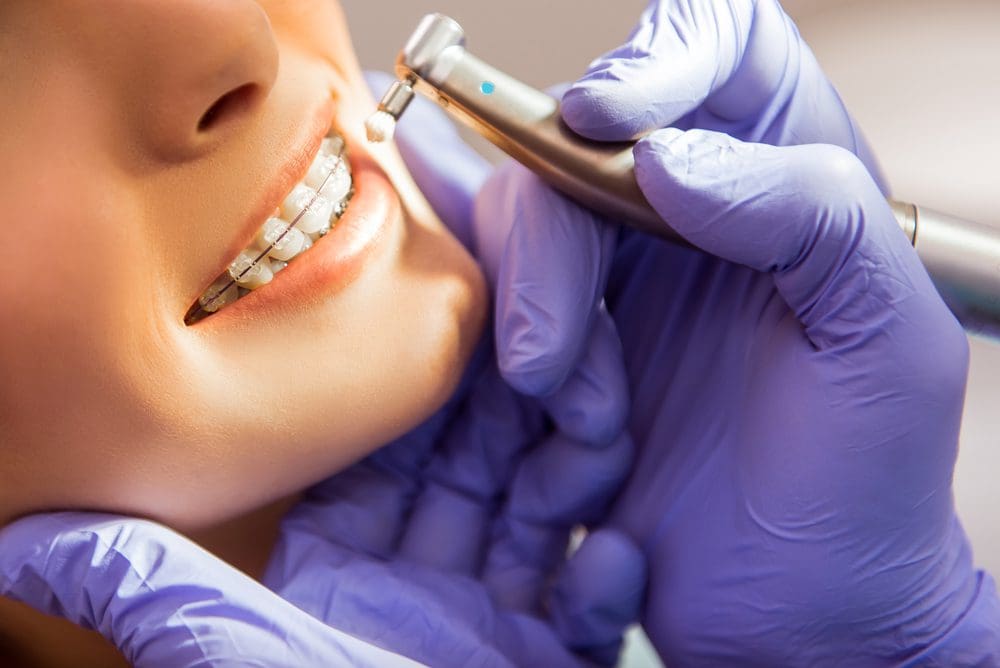Comprehensive Overview to Orthodontics Procedures for Fixing Dental Imbalances
In the realm of orthodontics, the trip to attaining a perfectly lined up smile entails a myriad of procedures customized to remedy oral imbalances. From typical dental braces to unnoticeable aligners and also surgical options, the area of orthodontics uses a variety of services to address differing levels of oral irregularities. Understanding the intricacies of each treatment, including their systems, benefits, and potential downsides, is critical in making notified decisions about one's orthodontic therapy. As we navigate with the detailed guide to orthodontic treatments for remedying oral imbalances, the complex information of each technique will unfold, clarifying the course toward a useful and unified oral alignment.
Orthodontic Procedures Overview

In addition to clear aligners and conventional braces, orthodontists might additionally recommend other interventions like headwear, palatal expanders, or retainers to deal with specific placement problems (cumming orthodontist). These procedures are customized to each individual's special requirements and might involve a mix of treatments to achieve the wanted results. Routine changes and monitoring are critical parts of orthodontic treatment to make certain progress is on track and to make any kind of required alterations along the way. By undertaking orthodontic procedures, clients can not just achieve a straighter grin yet also boost their overall dental health and wellness and feature.
Typical Braces: Just How They Work
When considering orthodontic treatments for oral imbalances, typical dental braces stand apart as a tried and true technique for remedying teeth placing. Typical braces include brackets, wires, and bands that collaborate to use constant pressure on the teeth, slowly relocating them right into the wanted placement. The brackets are affixed to the teeth making use of a special adhesive, and the wires are threaded via the brackets. By readjusting the stress of the wires, orthodontists can regulate the instructions and force related to each tooth, directing them into correct positioning in time.
As pressure is applied to the teeth with the dental braces, the bone bordering the teeth is improved to support the new tooth settings. Individuals will certainly require normal adjustments at the orthodontist's office to guarantee the braces proceed to apply the right pressure for effective teeth movement.
Unseen Aligners: Benefits And Drawbacks
These clear, custom-made trays are basically undetectable when used, making them an appealing choice for people looking for a more visually pleasing orthodontic treatment. Patients can eliminate the aligners before consuming or cleaning their teeth, lowering the threat of food obtaining stuck in the appliance and streamlining the cleaning process.

Surgical Orthodontic Options
Surgical treatments in orthodontics present sensible choices for dealing with intricate dental imbalances that might not be efficiently settled via standard orthodontic treatments. While conventional dental braces and undetectable aligners can deal with lots of orthodontic problems, specific situations call for medical treatment to attain optimum results. Surgical orthodontic options are normally advised for extreme malocclusions, considerable jaw discrepancies, and situations where the underlying bone structure requires adjustment to accomplish proper alignment.
One common medical orthodontic treatment is orthognathic surgical procedure, which includes repositioning the jaws to fix functional concerns such as trouble eating or speaking. This surgical procedure is usually executed in cooperation with an orthodontist that assists line up the teeth before and after the treatment. Surgical orthodontics might additionally include treatments to reveal affected teeth, remove excess periodontal cells, or reshape the jawbone to develop a much more harmonious facial account.
Before considering medical orthodontic choices, patients undertake an extensive evaluation to establish the requirement and potential advantages of such interventions. aligners. While surgery may appear complicated, it can substantially improve both the feature and aesthetic appeals of the smile in instances where traditional orthodontic therapies fall short
Retainers and Post-Treatment Treatment

Failing to abide with post-treatment treatment guidelines can result in regression, where the teeth progressively relocate back here are the findings in the direction of their initial placements. Regular retainer wear, excellent dental health, and normal oral examinations are necessary for keeping the outcomes attained via orthodontic surgical procedure and ensuring the long-term stability of the corrected dental positioning.
Final Thought
Finally, orthodontic treatments supply various choices for dealing with oral misalignments. Standard dental braces make use of steel braces and wires to move teeth into proper alignment. Undetectable aligners supply an even more discreet option however might not be ideal for all instances. Surgical orthodontic alternatives are available for a lot more extreme misalignments. Retainers are generally used post-treatment to preserve the new placement. Generally, orthodontic procedures can successfully boost dental health and wellness and aesthetic appearance.
As we navigate through the extensive guide to orthodontic treatments for remedying dental imbalances, the complex details of each method will unfold, losing light on the path toward a harmonious and useful dental alignment. - cumming invisalign
One of the most usual orthodontic treatments is the usage of dental braces, which are composed of steel braces and wires that apply gentle stress to slowly shift teeth into the wanted setting.When considering orthodontic therapies for dental misalignments, typical braces stand out as a reliable method for imp source remedying teeth positioning. Furthermore, unnoticeable aligners might not be suitable for complex orthodontic issues that need more considerable teeth motion, as they are generally suggested for moderate to modest instances. Retainers are customized orthodontic gadgets created to hold teeth in their dealt with placements after the completion of orthodontic treatment.